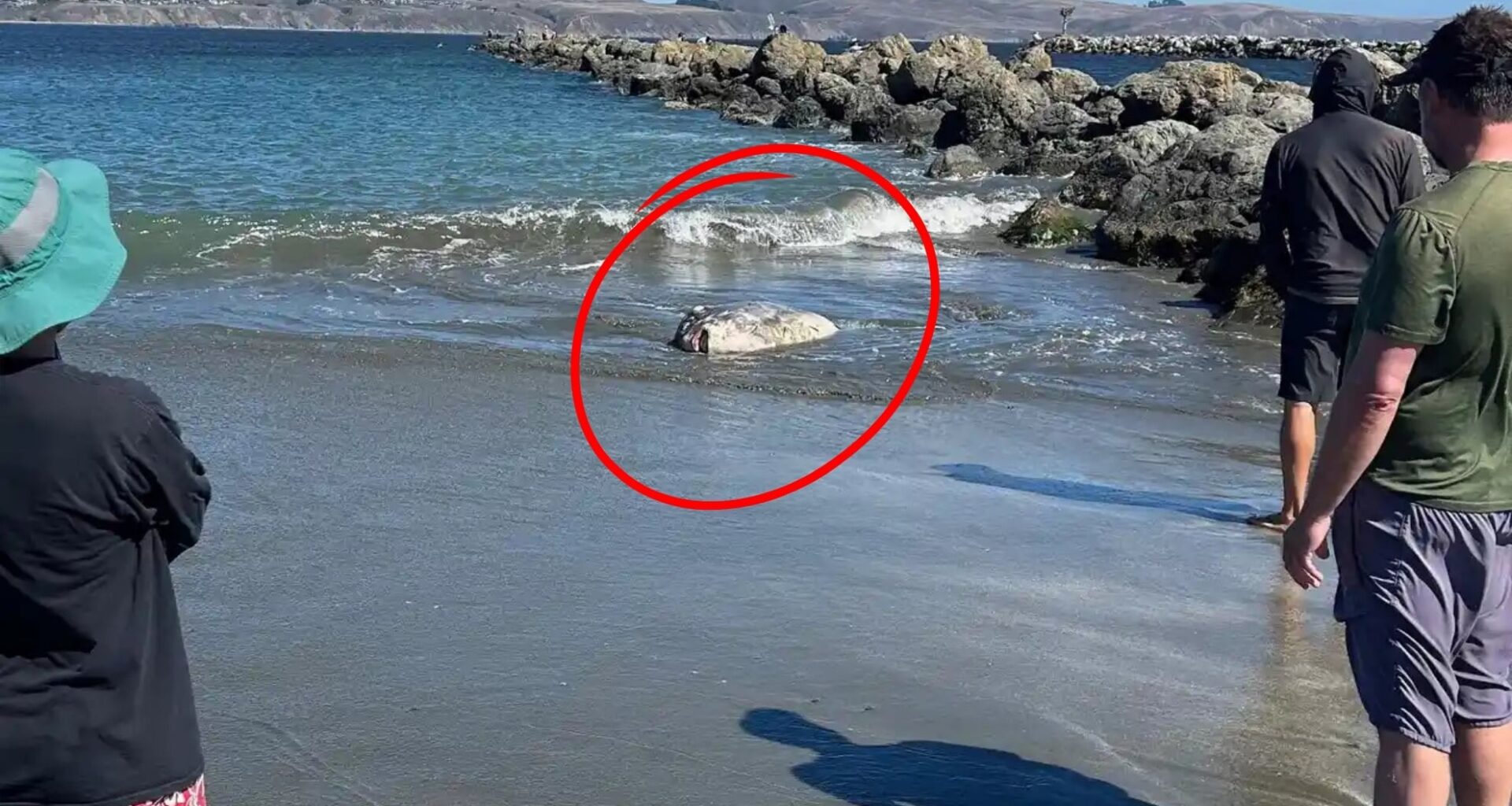The six-foot-long fish was discovered on the sand at Doran Regional Park in Bodega Bay, marking one of the few documented appearances of this species in North America.
Despite efforts from beachgoers to return it to the water, the animal died shortly after stranding. The event has now sparked renewed scientific interest in a fish that wasn’t formally identified until 2017 and remains largely a mystery to researchers.
The species, officially known as Mola tecta, was first recognized by a team led by Dr. Marianne Nyegaard in New Zealand and is considered one of the heaviest bony fish in the world. Capable of reaching up to 4,400 pounds and nine feet in length, this ocean dweller is rarely seen near land and is typically found in deep, temperate waters of the Southern Hemisphere.

Its appearance on a California beach challenges existing assumptions about its habitat range and migration behavior. According to Sonoma County Regional Parks, reports of large fish in the area surfaced days before the beaching, originally believed to be shark sightings.
Discovered during a Beach Cleanup
The fish was first noticed by Stefan Kiesbye, a local resident of Santa Rosa, who was walking the shoreline during a routine cleanup at Doran Regional Park. At first, he believed it was a dead sea lion, but the round body shape and unusual texture prompted a closer look. Speaking to The Press Democrat, he recalled, “It was so enormous and so weird and gorgeous. It’s like suddenly you’re on another planet.”
Within moments, the discovery attracted a crowd of onlookers. Photos show visitors gathering around the creature, with some attempting to push it back into the ocean. Melanie Gutierrez, a park ranger with Sonoma County Regional Parks, told SFGate that by the time she arrived, the fish had already stranded and died, despite the group’s efforts.
Rare Identity Confirmed by Global Expert
Confirmation of the animal’s identity came quickly. Dr. Marianne Nyegaard, who led the team that first described the species in 2017, reviewed photos of the fish and confirmed it was a Mola tecta, also known as the hoodwinker sunfish. According to her statements reported by The Press Democrat, the species has been documented in the Humboldt Current along the South American coast but was not believed to cross the warm equatorial waters frequently.

“They definitely cross,” Nyegaard said, explaining that the fish likely dive deep beneath warmer surface layers to navigate between ocean regions. While exact causes of this particular stranding remain unknown, she emphasized that such events are not unusual and don’t necessarily point to human interference. “As far as I can tell, it is not necessarily a sign of human influence,” she added.
Next Steps and Scientific Follow-up
Following the discovery, Sonoma County Regional Parks notified wildlife agencies and shared updates through social media. In a public statement, the agency confirmed that more than one hoodwinker sunfish had been seen swimming near the jetty at the time, suggesting the species may have been temporarily present in the area.
The Bodega Marine Laboratory, affiliated with the University of California, Davis, has since stepped in to assist with further examination. As stated by Ariana Reguzzoni, a spokesperson for Sonoma County Parks, researchers may take a tissue sample for further study. Photographs of the fish also revealed a potential injury to one of its fins, though this has not been confirmed as the cause of death.
Park officials have advised the public not to approach or interfere with beached animals in future cases. For scientists like Nyegaard, each rare encounter provides a valuable opportunity to better understand one of the ocean’s most elusive species. “Hopefully, there’ll be more information someday about why this is happening,” Reguzzoni told SFGate.
